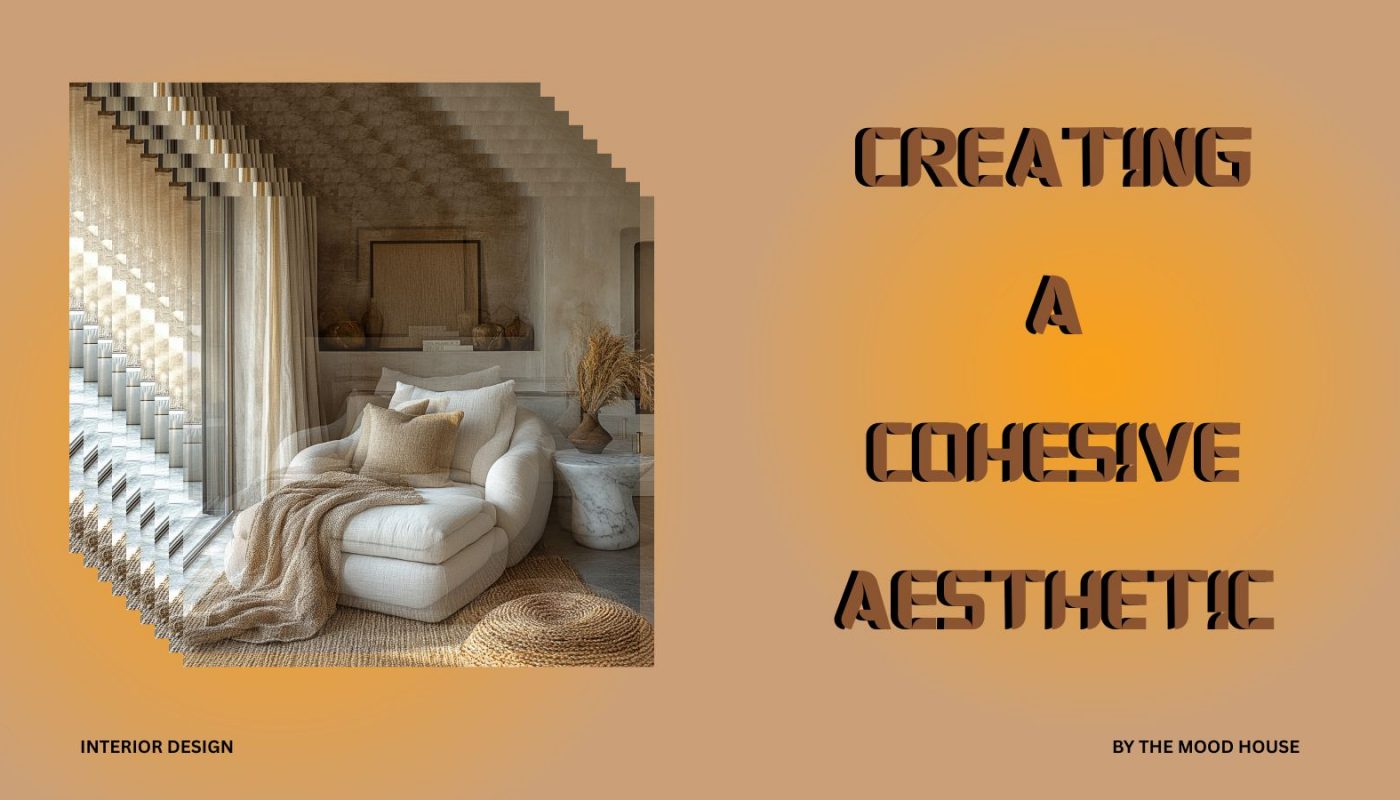
When you step into a beautifully designed home, there’s often an immediate sense of calm as though, everything just fits right. Have you ever felt that with anybody’s home you’ve visited? Well… this feeling isn’t accidental, it’s the result of well thought out choices that create a cohesive aesthetic. If you’re wondering how to bring that harmonious, curated look into your own home, here’s a guide to help you piece it all together with intention, creativity and style.
Choosing a Colour Palette That Brings Harmony

The first and arguably most important step in creating a cohesive space is choosing a consistent colour palette. A well-chosen palette acts like an invisible thread that ties different areas and design elements together, creating a flow that feels effortless.
Start by identifying your “anchor” colours: these are the shades that will dominate your space. Typically, a good rule of thumb is to select one dominant colour (about 60% of your space), a secondary colour (30%), and one or two accent colours (10%) to sprinkle throughout. For example, in my home the most dominant colour is beige, then a light grey and my two accent colours are dark green and orange. However, here is a breakdown of how you could do it:
For instance:
-
Dominant colour: A warm beige or cool grey for walls and large furniture pieces.
-
Secondary colour: A muted sage green or navy blue in rugs, throws, or curtains.
-
Accent colours: A pop of mustard yellow, terracotta, or brass finishes in cushions, art, or decor.
Choosing colours that complement each other naturally, like soft neutrals paired with earthy tones, ensures your space feels inviting, not overwhelming. You can even draw inspiration from nature, your favourite artworks, or fashion that resonates with your personal taste.
Pro tip: Stick to either a warm or cool undertone throughout your home. Mixing the two can often lead to visual clashes unless done very carefully (but don’t be afraid to try it).
The Importance of Textures, Materials, and Layering

Colour gets a lot of attention, but texture is what truly brings a room to life. Without varied textures, even a perfectly color-matched space can feel flat and uninspired.
Incorporate different materials to add depth and dimension. Imagine the pairing of a velvet sofa with a chunky knit throw, a sleek marble coffee table with a worn leather pouf, or linen curtains next to a distressed wood console. Each material brings its own character, playing with light and shadow to create visual interest.
Layering is key here:
-
Soft textures (like rugs, throws, and cushions) make a space feel cosy.
-
Hard textures (like metal, glass, and stone) add structure and sophistication.
-
Natural textures (like wood, rattan, and linen) grounds a space and gives it that earthy feeling.
Don’t be afraid to mix modern pieces with vintage finds, shiny surfaces with matte finishes, or fine textures with rustic ones. It’s the interplay of opposites that often makes a space feel rich and nuanced.
Visual example: Picture a reading nook with a plush velvet armchair, a woven jute rug underneath, a small hammered brass side table, and a light, airy linen curtain. It feels layered yet intentionally curated.
Tips on Keeping a Space Stylish but Uncluttered

A beautiful space can easily be overshadowed by clutter. To maintain style without sacrificing practicality, it’s essential to curate your belongings thoughtfully.
Here’s how:
-
Edit ruthlessly: Every piece in your home should serve a purpose, either functional or aesthetic. If it doesn’t bring you joy or utility, chuck it out.
-
Group decor intentionally: Instead of scattering small items everywhere, create little styled groupings. Thoughtfully arranged clusters of objects on surfaces like console tables, shelves, or nightstands. For instance, a small stack of books, a scented candle, and a ceramic vase create a purposeful moment rather than visual noise.
-
Leave breathing space: Resist the urge to fill every inch. Negative space (the space between objects) is just as important; it gives the eye a place to rest and allows your statement pieces to stand out. I can bet you’ve done this with some of your decor. Take a look and see how your eyes feel and where they tend to land.
-
Smart storage: Incorporate hidden storage in your decor, such as ottomans that open up, sideboards with cabinet doors, or decorative baskets. This way, necessities can stay close by but out of sight.
Ultimately, the goal is to strike a balance between personality and polish… a space that feels authentically yours yet still visually calm and coherent.
Designing a cohesive space isn’t about following strict rules, it’s about creating a home that feels connected, calming, and true to you. With a little planning, a thoughtful colour palette, textured layers, and a mindful approach to styling, your space can feel polished without ever losing its personality.
If you’re looking for even more tips on making the most out of your home, be sure to check out my previous post. It’s packed with clever ideas to help you maximise every inch without sacrificing style!
A thought for you guys: I want you to take a look around your home and see if you’ve intentionally or unintentionally played with a colour palette and texture. What are you seeing? Share in the comments section!



Great tips! “Leave breathing space.” You’ve got a good point here. I struggle with this one a lot though, maybe that explains why I sometimes feel chaos in my living room. Will try to implement that more.
Honestly I had the same issue until I moved in with my partner who has the ‘less is more’ mentality and it completely changed the game for me!
I love using natural elements/textiles :))). Super fun read !!
Me too! Its such a fun way to decorate, thank you for the support 🙂